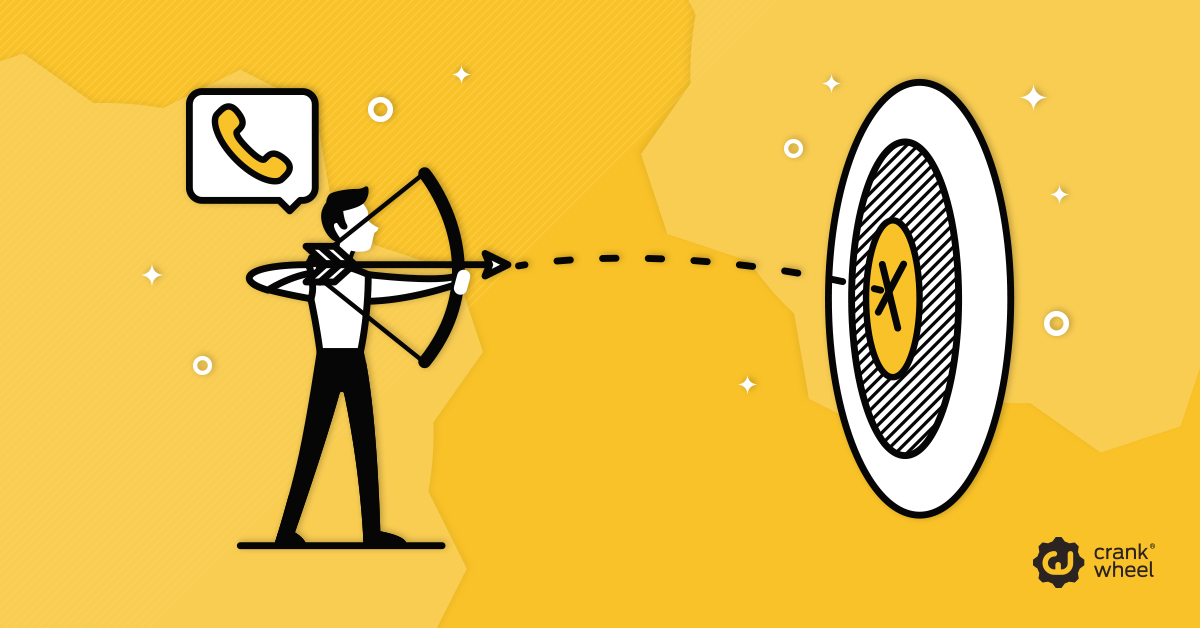Need to hit your year-end target? Generate more leads with telesales
Everyone in sales is pushing themselves forward to hit target before the end of the year. Wherever your company is in the financial year, the end of one year and start of a new one crosses an important psychological barrier. Hitting target gives sales professionals a valuable confidence boost.

So if you’re worried about hitting that target, now is the time to double down on efforts to move deals forward and generate new leads.
One of the most effective ways to do that is with telesales. Unlike emails, you are always going to get a much higher response rate. However, as anyone knows who regularly uses the phone to generate new business, it can prove challenging. Gatekeepers are ever watchful. And younger executives are less willing to answer a cold call than previous generations.
Let’s look at a few practical steps you can take to overcome telesales challenges.
Lead generation for inside sales executives
#1: Don’t rely 100% on the phone
An often-quoted statistic is it takes 18 calls to reach a potential buyer. If we took that and only that approach, it would take weeks, even months, of calls to try and get through to someone.
It should also be noted that only 24% of sales emails are opened. But that, at least, is another way of getting on a buyers radar. And then what about using social media too? LinkedIn is the most logical route for most sales and buyer interactions. Other platforms, such as Twitter or Instagram might be useful too, depending on your industry.
Instead of relying on one avenue, take every option open to you: call, speak to a gatekeeper, leave a voicemail, ask your network for introductions and referrals, send emails, and interact through LinkedIn and other social channels as needed. Either a potential prospect will let you know they’re not interested or you will get a chance to discuss the opportunity in more detail, qualify the lead, or live demo the product.
#2: Proactive approach for online forms
Inbound marketing is a lead generation function. At the end of any funnel is a stream of potential sales prospects.
As an inside sales team, your role is to qualify these leads. One of the biggest mistakes sales and marketing teams make - and one reason why those functions aren’t as joined up as they should be - is waiting. Whenever a new lead comes in, one of the team need to pick up the phone or jump on a live demo call. Why the urgency?
According to a study of 2,200 companies, leads that were called within 60 minutes of an inbound enquiry were “seven times likelier to have meaningful conversations with decision makers than those who waited even 60 minutes.” Speed is everything. With live demo software, you can jump into a consultative qualifying call within those crucial sixty minutes.
Another study of 433 companies found that “only 7% responded in the first five minutes after a form submission. More than half didn’t respond within five business days.”
Buyers don’t want to wait. Potential buyers have already done their homework and want more information. Sales does not have the time to wait for marketing to upload inbound lead data into a CRM, or email them over to sales once a week. In that scenario, you’ve already lost most of those prospects; they’re talking to your competitors. Timing is everything. Don’t hesitate to call a prospect when they’ve expressed interest.
#3: Use data to improve response rates
For those using emails to improve phone responses (as part of a mix of outreach approaches), the following statistics are worth keeping in mind:
• Three to four word subject lines get a higher response rate;
• As do emails that are between 50 and 125 words;
• Emails written at a third-grade (fairly simple) reading age are more likely to get a response than college-age writing;
• Ask questions. Asking one to three questions improves response rates 50%;
• DON’T USE ALL CAPS. That reduces response rates 30%.
Once you’ve got a decision maker on the phone, there are a few other stats worth remembering:
• Ask between 7 and 11 questions. It makes a big difference to call outcomes, and it’s also a key part of the discovery process;
• Using collaborative words and phrases, such as “we,” “us,” “our,” and “together”, improves outcomes 10x compared to “you,” “I,” “me,” and “your.”
• Some of the worst words to use in calls: “Show you how” and “discount,” whenever they’re used 4 or more times. Mentioning your brand name or a competitor 4 or more times has an equally negative impact on conversion rates, reducing them up to 17%.
• Asking “How are you?” will improve the chances of booking a follow-on meeting or demo 3.4x; unlike the phrase “Did I catch you at a bad time”, which reduces this chance 40%.
• Successful sales people talk 54% of the call, whereas unsuccessful only talk 42% of the time. Ask questions and listen, but be an active participant in the conversation.
• Using “we” instead of “I” increases the chances of success 35%. Make everything collaborative.
As you race towards the finish line at the end of this year, now is a good time to pick up the phone, start making outbound sales calls and deploy a mix of outreach tactics to reach new decisions makers. Everyone you speak to is a potential sale. If not this year, then you are working to strengthen your 2019 pipeline. Time to start dialling!
